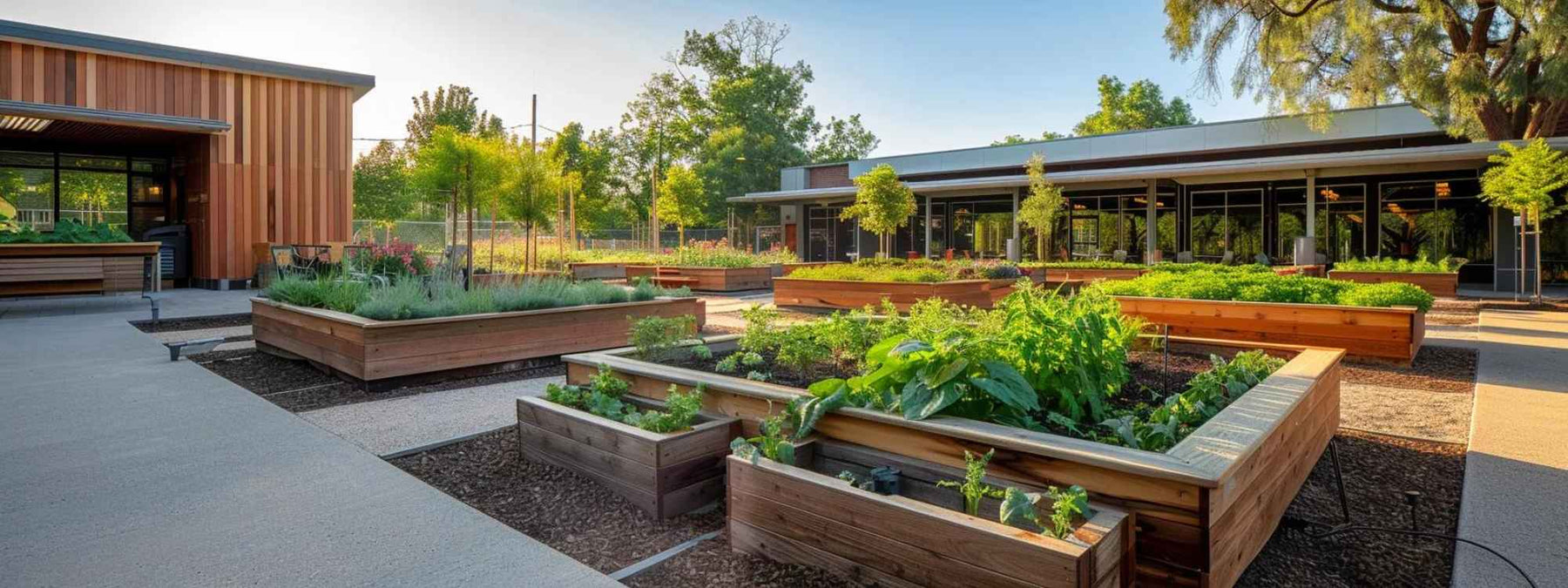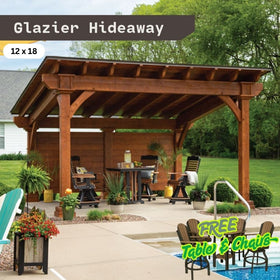512-777-0154

Best Plants for Raised Garden Beds
Ever noticed how raised garden beds are suddenly everywhere? Whether scrolling Instagram or exploring your local community garden, they're popping up more and more. Turns out, there's a good reason for it.
Raised garden beds aren't just trendy; they make gardening simpler and your plants happier. Here's why: improved drainage means fewer soggy roots. Better soil quality means stronger plants. And having everything at waist level? Say goodbye to backaches.
But choosing the right plants matters. Pick the wrong ones, and you'll end up disappointed and wondering what went wrong. But choose wisely, and you'll have a garden that's lush, productive, and easy to maintain.
So, what plants do best in raised beds?
That’s exactly what we’re going to explore here.
Why Raised Garden Beds?
Raised garden beds give you total control over your soil. Instead of relying on whatever you’ve inherited in your backyard—rocks, clay, mystery roots—you choose the perfect soil mix. Better soil means healthier plants, more growth, and fewer headaches.
Then there are weeds. Traditional gardening often means battling endless weeds. With raised beds, weeds are drastically reduced. Less time weeding, more time enjoying your garden.
Pest control gets easier, too. The contained space makes spotting pests early simple. And dealing with them quickly can stop a small problem from becoming a full-blown disaster.
But building raised beds sounds like extra work. Is it worth it?
Think about it like this. Imagine spending an entire weekend prepping your regular garden, only to watch weeds choke out your seedlings a week later. Frustrating? Absolutely. Raised beds help you avoid that scenario altogether.
So yes, they do take a bit of initial effort, but most gardeners find the payoff well worth it.
Choosing Your Plants Wisely: It’s Easier Than You Think
Standing in front of a wall of seed packets can feel like staring at a menu in another language. Tomatoes? Lettuce? Herbs? It all sounds good, until it doesn’t grow.
Choosing the right plants for your raised garden bed doesn’t need to be complicated.
Start with the basics. Think about how much sunlight your bed gets each day. Full sun? Partial shade? That alone narrows your options.
Next, take your climate into account. Some plants love heat. Others prefer cooler temps. A quick check of your planting zone can save you a lot of trial and error.
Soil matters too. The good news is, with raised beds, you’re in control. You can mix soil that suits whatever you want to grow.
And finally, think about what you want out of your garden. Salad greens? Herbs for cooking? A few colorful flowers? Start there.
The more you plan up front, the easier it gets. No need to overthink it. Just pick plants that match your space and goals and build from there.
Best Veggies for Your Raised Garden Bed
Once your Outdoor Living Today 6×3 Raised Garden Bed is ready, it’s tempting to plant everything at once. But not every vegetable plays nicely with this setup. Some need more space. Some like to sprawl. Others? They’re practically made for raised beds.
1. Leafy Greens
If you’re new to raised bed gardening, start with leafy greens. Lettuce, spinach, and kale are solid choices. They grow fast, don’t need deep soil, and give you multiple harvests.
Raised beds, like Outdoor Living Today 8×12 Raised Garden Bed, are great for greens because you control the soil mix. Loose, rich soil means faster growth and fewer problems. They also like cooler weather, so you can plant early and replant again in the fall.
Keep them spaced a few inches apart so they don’t crowd each other. Most leafy greens prefer 4–6 hours of sunlight. Water them regularly, but don’t drown them. Think “evenly moist,” not swamp.
2. Root Vegetables
Carrots, radishes, and beets love raised beds, and it’s not just because they’re picky.
The soil in an Outdoor Living Today 8×16 Raised Garden Bed stays loose and well-drained, which helps these veggies grow long and straight instead of stunted and stubby.
Use fine, rock-free soil, and don’t pack it down too tightly. Plant seeds in rows about 2 inches apart and make sure the bed is at least 10–12 inches deep. Water steadily to avoid splitting or uneven growth.
3. Tomatoes and Peppers
Tomatoes and peppers are popular for a reason. They do especially well in raised beds because the soil warms up faster, and they love the heat.
Tomatoes need support, so add a cage or stake early. Peppers don’t need as much help, but they still appreciate consistent care. Both prefer full sun and well-drained soil that holds moisture without staying soggy.
Water at the base, not from above. Too much overhead watering can lead to disease. And don’t overcrowd them. These plants like their space.
Herbs Galore: Why Raised Beds and Herbs Are a Perfect Match
Herbs and raised beds go hand in hand. If you’re looking for low-maintenance plants that give back a lot, herbs are the way to go.
Start with the basics: basil, thyme, rosemary, and parsley. These herbs are hardy, productive, and easy to manage, especially in the Outdoor Living Today 6×3 Urban Raised Garden Bed. The controlled environment makes a big difference. Good drainage means fewer root issues. And with everything in one place, watering and harvesting become much simpler.
Most herbs like full sun. So, if your bed gets at least six hours of light, you’re in business. Basil thrives in warm soil. Rosemary doesn’t like wet feet. And parsley? It can handle a bit of shade, which makes it more flexible.
Keep spacing in mind. Give each plant some breathing room to avoid crowding. And don’t wait too long to start snipping. Regular harvesting helps herbs grow fuller, not weaker.
Beautiful Blooms: Flowers That Love Raised Beds
Flowers might not be the first thing you think of when planning a raised bed. But they deserve a spot, especially if you want a garden that looks good and works harder.
1. Edible Flowers
Nasturtiums, calendula, and pansies aren’t just nice to look at. They’re edible, too. Sprinkle them on a salad or use them as a garnish. They taste as good as they look.
These plants do well in an Outdoor Living Today 12×8 Raised Garden Bed because they like loose soil and decent drainage. Plus, it’s easier to keep them clean and tidy when they’re off the ground. That’s a bonus if you plan to eat them.
They don’t need much space, and they’ll add color fast. Just give them enough sun. Most edible flowers prefer full sun for at least 5–6 hours a day.
2. Pollinator-Friendly Blooms
Want more bees, butterflies, and helpful insects in your garden? Plant marigolds, cosmos, or zinnias. They attract pollinators, which can help boost the yield of your fruits and vegetables.
Raised beds, like Outdoor Living Today 4×1.5 Urban Raised Garden Bed, make it easy to tuck these flowers along the edges or in unused corners. Choose a sunny spot and group a few together. Pollinators like having multiple blooms to visit.
Skip the chemicals, though. If you want bees to show up, your flowers need to be clean, no pesticides, no sprays.
Quick Tips for Successful Raised Bed Gardening
- Start with the right soil. Raised beds let you skip the guesswork. Aim for a mix of compost, topsoil, and something for drainage, like perlite or coarse sand.
- Water consistently. Beds can dry out faster than in-ground gardens. A deep soak a few times a week usually beats a daily sprinkle. Check the soil before you water.
- Rotate your crops. Don’t plant the same thing in the same spot every season. It helps reduce soil-borne diseases and keeps nutrients balanced.
- Watch for weeds and pests. Raised beds usually have fewer of both, but not zero. Mulch helps keep weeds down. As for pests—spot them early, and you’ll have fewer problems later.
None of this is hard. But ignoring the basics can quickly undo the benefits of raised bed gardening. Keep it simple, stay consistent, and your plants will thank you.

Raised Beds, Better Results: A Solid Start for Any Gardener
Building a raised garden bed is one thing, but choosing the right plants? That’s where the real difference shows up. Good choices now mean less hassle later. Healthier growth. Better harvests. And maybe even fewer weeds to pull on a Saturday morning.
Gardening doesn’t have to be complicated. With the right setup and a little consistency, it can be calm, rewarding, and even a little addictive.
Whether you’re after fresh herbs, leafy greens, or blooms that do double duty, it all starts with planting smart. And raised garden beds make that easier.
If you’re looking to take your outdoor space even further, we’ve got more blog posts to help you plan, grow, and enjoy your time outside, without the overwhelm.








